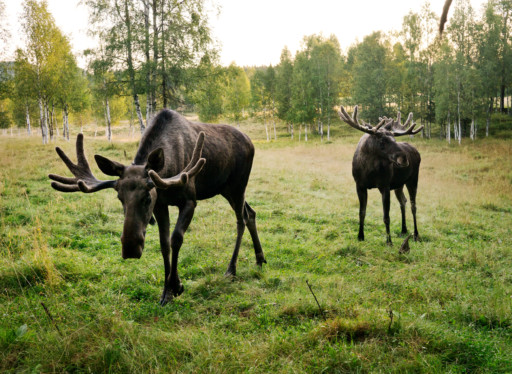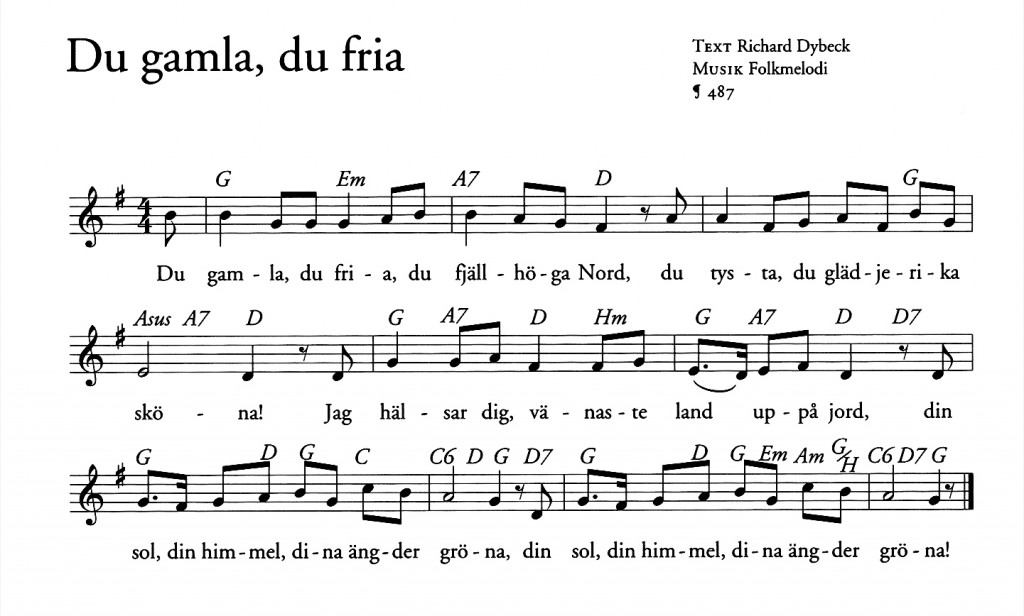Sweden – facts and figures
Capital: Stockholm
Population: 10 million, about 0.13 per cent of the world’s population
Life expectancy: Men 80.4 years, women 84 years
Foreign-born inhabitants: 17 per cent
Religion: The Church of Sweden is Evangelical Lutheran, but here are also many other faiths in the country
Language: Swedish
Form of government:Constitutional monarchy, with parliamentary democracy
Parliament: The Riksdag, with 349 members in a single chamber
National Day: 6 June
Education: Nine years of compulsory schooling, but most pupils continue to the three-year upper secondary school. Around one-third go on to higher education at universities and colleges throughout Sweden
Working hours: Standard work week is 40 hours, minimum paid vacation is 5 weeks
Labour force participation: Men: 70%; Women: 65%
Longest north-south distance:1,574 km
Longest east-west distance: 499 km
Total area: 528,447 sq km, the third-largest country in Western Europe after France and Spain
Urban and industrial land: 3 per cent
Agricultural land: 8 per cent
Forests: 53 per cent
Marshland: 9 per cent
Grasslands: 7 per cent
Bare rocks and mountains: 12 per cent
Lakes and rivers: 9 per cent
Highest mountain: Kebnekaise (2,103 m)
Biggest lake: Vänern (5,650 sq km)
Calling code: +46
Internet code: .se
Time zone: GMT +1
Currency: 1 krona (SEK) = 100 öre
GDP per capita (PPP): SEK 437,900 (2016)
Population in major cities (including suburbs):
– Stockholm: 2,210,000
– Gothenburg: 995,000
– Malmö: 643,000
Most important export goods: Machinery and transport equipment, chemicals and plastic and rubber products, electronics and telecommunications equipment, energy products, industrial machinery, road vehicles, minerals, foodstuffs
Source: Statistics Sweden
Sweden in brief
Sweden is a sparsely populated country, characterised by its long coastline, extensive forests and numerous lakes. It is one of the world’s northernmost countries. In terms of surface area it is comparable to Spain, Thailand or the American state of California. Sweden’s borders have been unchanged since 1905 and the country has not been at war since 1814.
Extreme contrasts
Sweden experiences extreme contrasts between its long summer days and equally long winter nights. In the summer, the sun stays in the sky around the clock in the parts of Sweden north of the Arctic Circle, but even as far south as Stockholm (59°N) the June nights have only a few hours of semi-darkness.
The Gulf Stream
Considering its geographic location, Sweden enjoys a favourable climate. This is mainly because of the Gulf Stream, a warm ocean current that flows off Norway’s west coast. Scandinavia has been completely covered by ice during several periods of history.
The most recent Ice Age ended only about 10,000 years ago, and the weight and movement of the ice sheet had a profound effect on the landscape. The hard outcrops of underlying rock were polished into the rounded shapes characteristic of Sweden’s archipelagoes, and hollows were deepened into valleys and lakes.
Varied scenery with a rich wildlife
With its variety of landscapes, Sweden has everything from bears and wolves in the north to roe deer and wild boar in the south. The country also has a wealth of flora and aquatic life, which contribute to its biological diversity.
Much of the Swedish landscape is dominated by coniferous forests such as pine and spruce, with large forests of deciduous trees such as birch and aspen in the south. Because of their limestone-rich bedrock and favourable climate, the islands of Gotland and Öland and parts of the Scandinavian mountain range have an interesting flora that includes numerous varieties of orchid.
Numbers increasing
Along with its beautiful scenery, Sweden has a rich and varied wildlife. The wolf for example is expanding its habitat across northern and central Sweden. Bear, lynx and wild-boar populations are also increasing. Throughout the country there are large numbers of elk (moose), roe deer, foxes and hares. The elk is a great prize for hunters but is also a traffic hazard. Hunting is closely regulated, and many species of animal are completely protected. Winter bird life in Sweden is dominated by a few species, but summer brings large numbers of migratory birds from the south.
With its long coasts and many lakes, Sweden also has a rich variety of aquatic life. Fish species vary from the cod and mackerel of the salty Atlantic to the salmon and pike found in the far less saline Gulf of Bothnia and in lakes and rivers. Herring and the smaller Baltic herring used to be an important staple food, but today are seen more as delicacies.
National parks
In 1910, Sweden became the first European country to establish national parks, mainly in the mountainous districts of Norrland. This helped save part of Europe’s last wilderness from exploitation. Numerous nature reserves and cultural heritage areas have also been established across the country.
Under the Right of Public Access (Allemansrätten), anyone is entitled to hike through forests and fields and pick berries and mushrooms, without asking the landowner’s permission, but this right also carries with it an obligation to respect the natural environment and private property.

Did you know?
People in Sweden have a lot of room to move, with only about 23 inhabitants per square kilometre. For the EU, the average is more than 100 people per square kilometre.
If you travel the equivalent of the length of Sweden south from the country’s southernmost point, you end up in Naples, Italy.
The right of public access
Allemansrätten – the right of public access – gives everyone the right to enjoy Sweden’s outdoors. It allows the public to roam freely, even on private land, to camp overnight and to pick mushrooms and berries. The right also brings responsibilities – to treat flora and fauna and other people’s property with care. It can be summed up in the phrase ‘don’t disturb, don’t destroy’. The right of public access is written into the Swedish constitution. But it is not a law as such, rather a custom or part of the cultural heritage that has evolved and become accepted over the years.
National emblems of Sweden
Among the Swedish national emblems are the blue and yellow flag, two coats of arms, Three Crowns and the national anthem.
The oldest recorded images of a blue flag with a yellow cross date from the 16th century. The yellow cross was always borne on Swedish battle standards and banners, because the Swedish coat of arms was blue divided by a cross of gold. The triple crown device has been used as the emblem of Sweden at least since 1336, when it had long been a familiar symbol of the ‘Three Wise Kings’.
Since 1916, 6 June has been celebrated as Swedish Flag Day. This finally also became Sweden’s National Day in 1983 and a public holiday from 2005. The date was chosen for two reasons: the election of Gustav Vasa as Sweden’s king on 6 June 1523 laid the foundation of Sweden as an independent state; and on the same date in 1809, Sweden adopted a new constitution that included the establishment of civil rights and liberties.
The Swedish national anthem
The lyrics of Du Gamla, Du Fria were written by folklorist and ballad writer Richard Dybeck (1811–77) and set to a folk melody from the province of Västmanland in the mid-19th century. Around 1900, people began to sing it more frequently, and over time it came to be regarded as the Swedish national anthem.

Listen to Sweden’s national anthem
Translation of the Swedish national anthem
Thou ancient, thou freeborn, thou mountainous North, In beauty and peace our hearts beguiling, I greet thee, thou loveliest land on the earth, Thy sun, thy skies, thy verdant meadows smiling. Thy sun, thy skies, thy verdant meadows smiling.
Thy throne rests on mem’ries from great days of yore, when worldwide renown was valor’s guerdon. I know to thy name thou art true as before. In thee I’ll live, in thee I’ll die, thou North Land, In thee I’ll live, in thee I’ll die, thou North Land.
Source: https://sweden.se/society/sweden-an-overview
Tìm hiểu về Thụy Điển:
https://kids.nationalgeographic.com/explore/countries/sweden
http://nationfacts.net/sweden-facts/